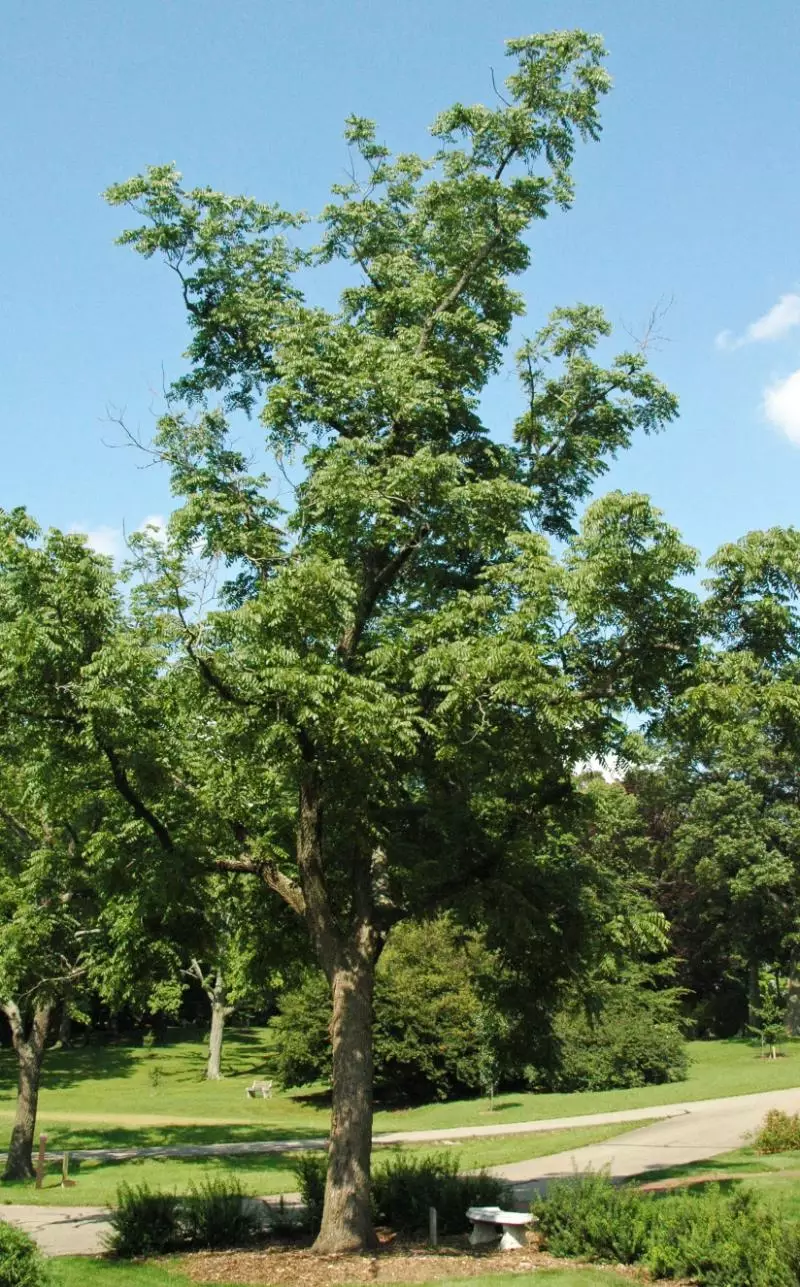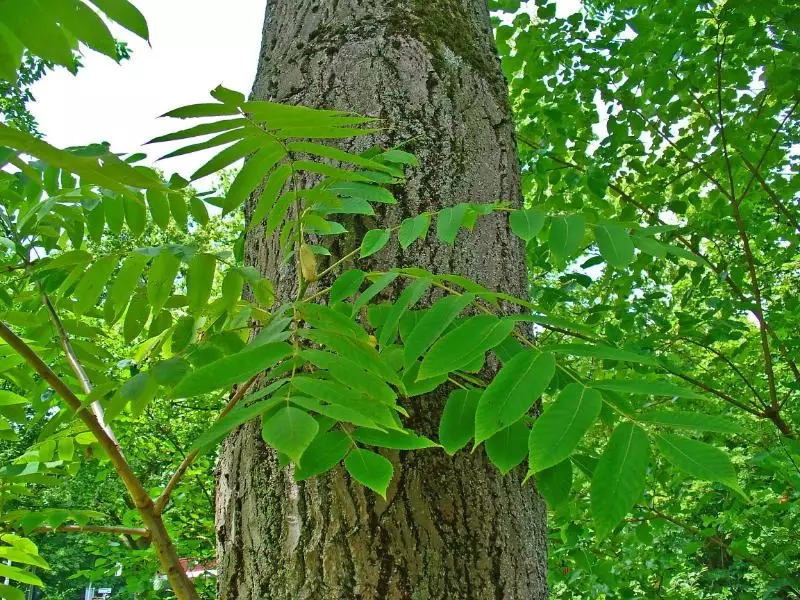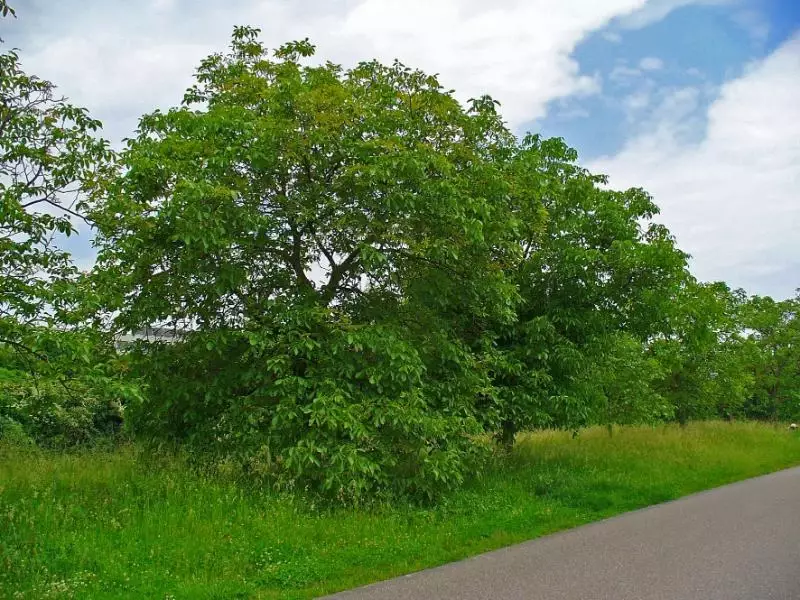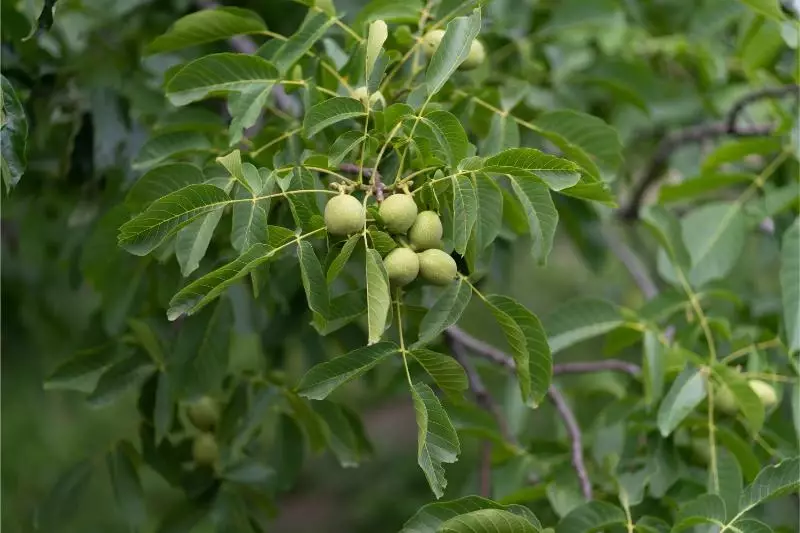3 Types of Walnut Trees in Indiana (With Pictures)
In Indiana, over 40 million walnut trees are spread across its diverse landscapes. The black walnut species contribute significantly to the state's forestry industry, with over 200 million board feet of walnut lumber produced annually, positioning the Hoosier State as a notable contributor to the United States' hardwood industry.
Indiana is home to two primary types of walnut trees: the Black Walnut (Juglans nigra), and the Butternut or White Walnut (Juglans cinerea), and one non-native species, the English Walnut (Juglans regia). These trees are valued for their high-quality wood, and for their role in supporting local ecosystems and wildlife.
The cultivation and management of walnut trees in Indiana underscore the balance between economic development and environmental conservation. Get to know more about the importance of these trees to both the state's economy and its natural heritage, as you read further below.
Summary
- Native to Indiana, the Black Walnut is highly valued for its wood, while its large leaves and fruit provide essential habitat and food for wildlife.
- Though valued for its light-colored timber and nuts, the Butternut is becoming scarce due to butternut canker disease.
- The English Walnut tree adapts well across the Midwest and requires cross-pollination for best yield.
- These walnut trees thrive in well-drained, fertile soils with full sun, producing durable wood and nuts used in a variety of culinary and commercial products.

On this page:
| Species | Size (Height and Diameter) | Nut Characteristics | Habitat Preferences |
|---|---|---|---|
| Black Walnut (Juglans nigra) | 50-75 ft, 2-4 ft | Thick, green husk; round, 1-2 inches in diameter, hard-shelled nut with rich flavor | Deep, fertile, well-drained soils; full sun |
| Butternut (White Walnut, Juglans cinerea) | 40-60 ft, 1-3 ft | Light green husk; oval, sweet, oily nut; easier to crack shell | Moist, well-drained soils; full sun to partial shade |
| English Walnut (Juglans regia) | 40-60 ft, 2-3 ft | Smooth, thin shell; 1.5-2 inches long; nut is easy to crack; known for exceptional taste | Well-drained soils; full sun to partial shade |
Black Walnut (Juglans Nigra)
The Black Walnut, known scientifically as Juglans nigra, is a staple among the nut trees of Indiana. Its hardwood is sought after for furniture and veneer production due to its strength and quality.
Recognized by its dark, ridged bark, and large leaves that can have up to 23 leaflets, this native tree can grow quite large, with a natural range that covers much of Indiana. The nuts it produces are sought after by wildlife and humans alike.

Your encounter with Black Walnut will be memorable, not only for its impressive size, usually reaching 30 to 130 feet in height, but also for its distinct, pinnately compound leaves. Each leaf can grow one to two feet long, with alternately arranged leaflets on twigs.
The tree's fruit—the nut—is encased in a thick, hard shell and a greenish husk. When it ripens, your patience is rewarded with rich, flavorful nut meat, a favorite among both people and wildlife.
Black Walnut thrives in the varied climate of the Midwest, particularly in Indiana's loam soils, which provide the drainage and nutrients the species favors. It’s commonly found alongside shagbark hickory and American hazelnut.
Not just valuable for its timber, this native species offers essential habitat for fauna and plays a role in forest improvement.
Butternut (Juglans Cinerea)
The Butternut, or Juglans cinerea, is a deciduous tree native to North America. Commonly known as the white walnut, this hardwood tree is valued for its light-colored timber and unique nuts.
It's a species you may often find scattered across the forests and woodlands of the United States, including areas like Indiana, and extends into Canada.

Size & appearance
Butternut trees usually attain heights of 60 to 90 feet, though some can reach up to 120 feet. The bark is light gray and the foliage consists of long, compound leaves.
In the spring, butternuts produce inconspicuous greenish flowers, eventually giving way to oblong nuts enclosed in a sticky, green husk.
Habitat & growth
You'll find these trees thrive in well-drained soil, often along riverbanks and within moist, fertile valleys. They are preferable for open lands as they receive the sunlight required for optimal growth.
Despite their preference for specific climates, butternut trees have become scarce due to butternut canker disease.
Ecology
Butternut trees bear fruit with rich and high-quality nuts, inside a thick shell, which are sought after by a range of wildlife. Their wood is often used for veneer and making furniture due to its attractive grain and workability.
English Walnut (Juglans Regia)
The English walnut, known scientifically as Juglans regia, is not just a delightful addition to any orchard; it's also a tree steeped in history. Originating from regions stretching from Europe to China, this species has made its way into many parts of the United States, including Indiana.
Though not native, the Juglans regia has been successfully cultivated in Indiana. Prized for its nut production, the English Walnut's wood is also used for making cabinets and furniture.

Its leaves are typically smaller with fewer leaflets, and the nuts have a smoother shell compared to the Black Walnut. Its nut, encased in a round, hard shell, is notable for its rich flavor — a food source cherished by people and wildlife alike.
In your Indiana plantation, the English walnut might share space with familiar trees like the white oak. While not as ubiquitous as the Native American walnut, Juglans regia graces the landscape with its majestic presence.
Watch for the English walnut's male flowers, or catkins, which appear in clusters during late spring. You'll find that the nuts mature by autumn, a time when they're eagerly gathered.
These nuts don't just taste delicious; they're packed with protein, a key consideration if you're examining their environmental impact.
While the English walnut thrives in states like California, it can also do well in the Midwest. If you happen to be in Illinois, Missouri, Ohio, or areas of Virginia and North Carolina, you'll find these trees can adapt, provided they're not in stiff competition.
To get the best yield, ensure you plant them where they can cross-pollinate. Remember, good things come to those who wait: it takes patience to see these trees through their dormancy period to when they can finally bear those delicious nuts.
If you need guidance, don't hesitate to contact your local Department of Natural Resources for advice on seedlings and cultivation practices.
How profitable is a walnut farm? Find out here.
Walnut tree ecology and uses
In Indiana, walnut trees like the Eastern Black Walnut are important for both ecological balance and practical uses. You'll learn about their growing conditions, the products they provide, their environmental impact, and how to identify and care for them.
Growing conditions
Walnut trees thrive in well-drained, fertile soils, but are adaptable to various soil conditions. You should plant them in areas with full sun and deep soil to accommodate their long taproot system.

The ideal locations are often flood-free ledges with rich loam or clay-loam soils. Research from the Purdue Extension indicates that they're tough and can tolerate winter well, but they're sensitive to drought conditions.
Walnut tree products
- Starting with nuts, which are encased in thick husks, these trees provide food for wildlife and ingredients for your favorite recipes.
- The hard, durable wood of walnut trees, favored for its dark, rich color, is widely used in making furniture, veneer, and other specialty products.
- The crushed shells of walnuts are also utilized in abrasive and cleaning products.
Environmental impact
The Eastern Black Walnut, native to the Midwest, plays a crucial role in supporting local ecosystems. Its leaves, which are compound with multiple leaflets, add organic matter to the soil as they decompose.
The presence of walnut trees can enhance biodiversity by providing habitat and offering nuts as a food source for various wildlife species.
Identification and care
To identify a walnut tree, look for its large, pinnately compound leaves, chocolate-brown bark, and round fruit.
Care for these trees involves regular pruning to maintain a healthy crown and watching for signs of disease. Regular watering during dry periods and mulching can support their growth and health.



